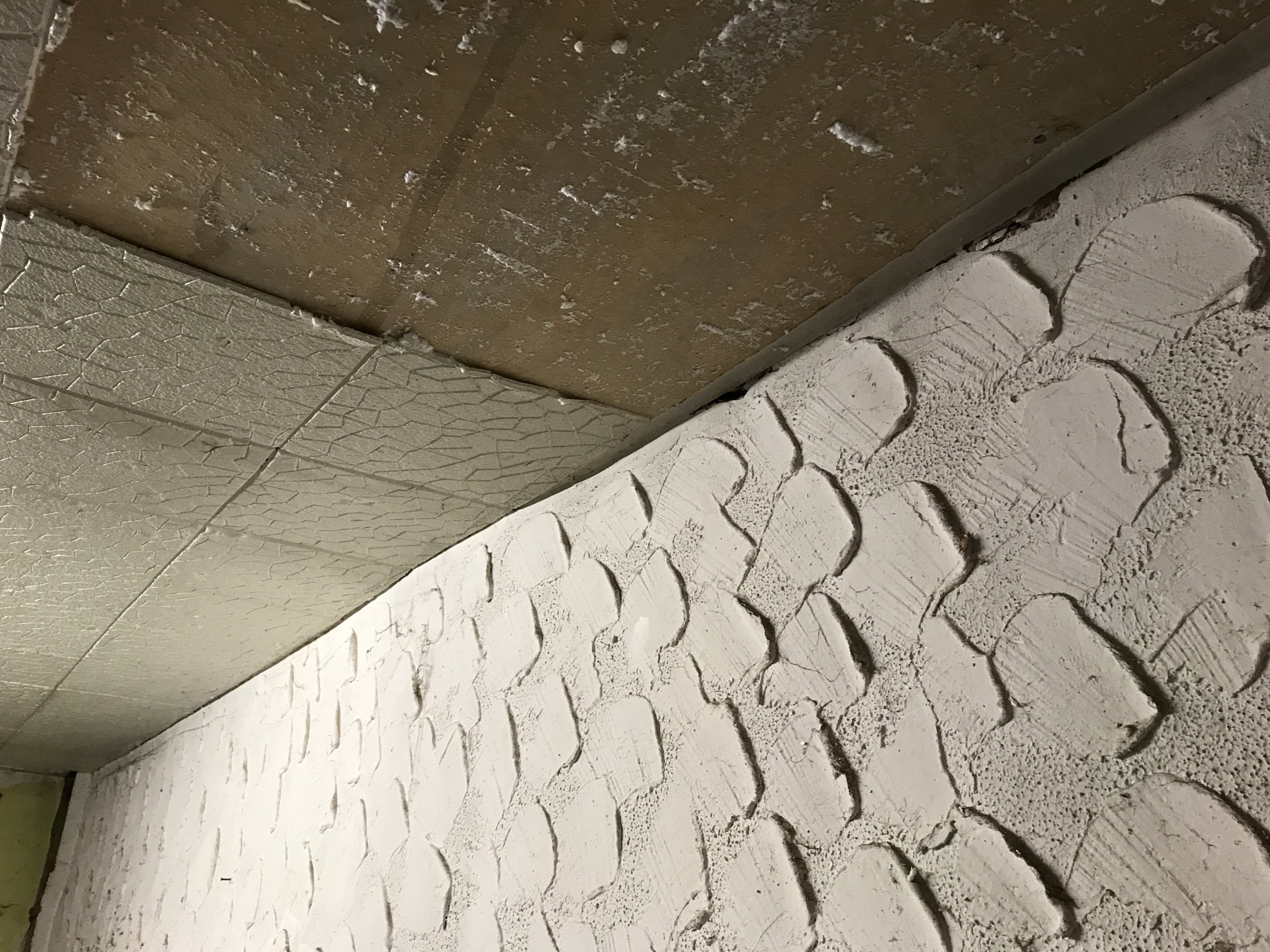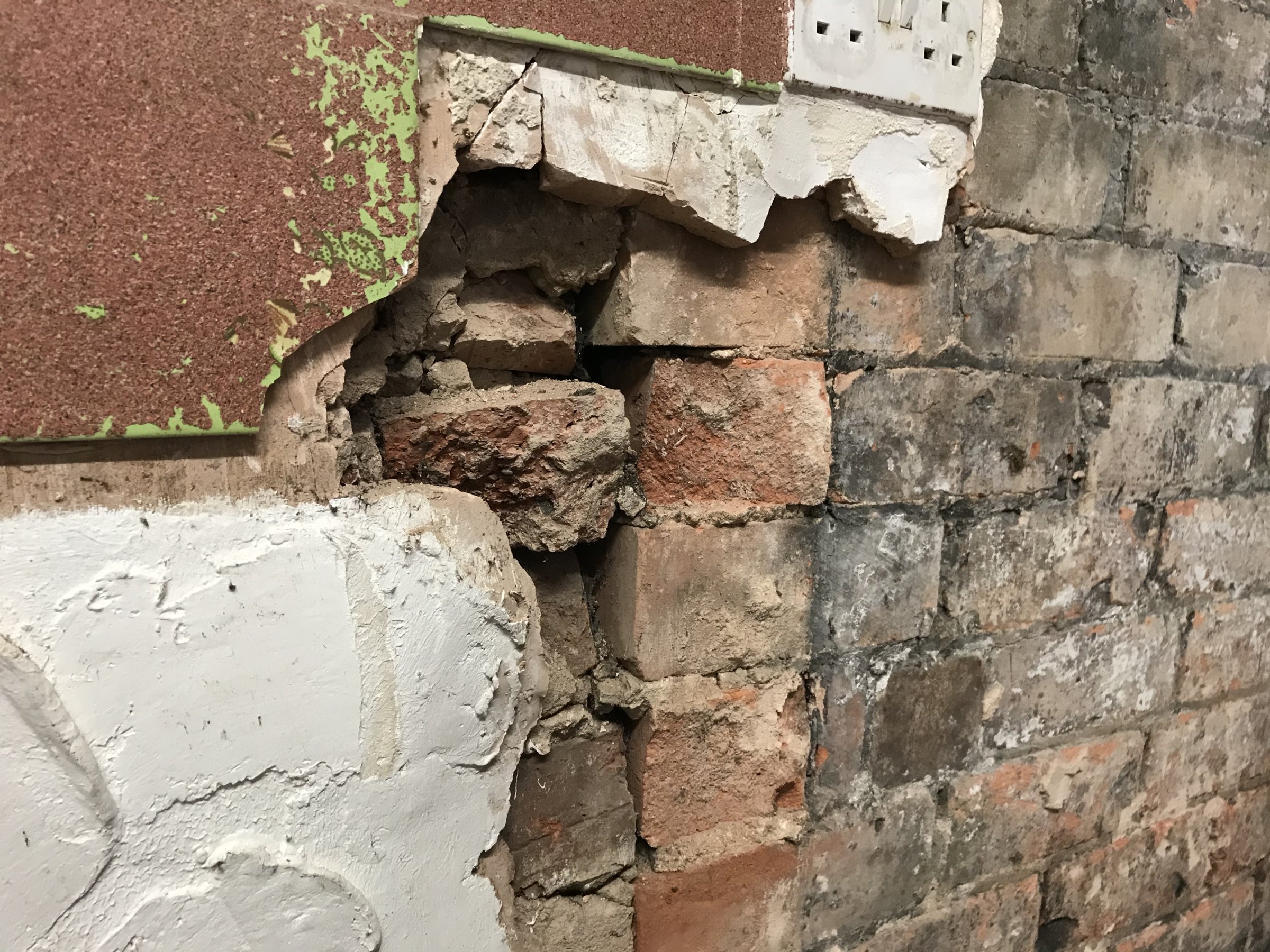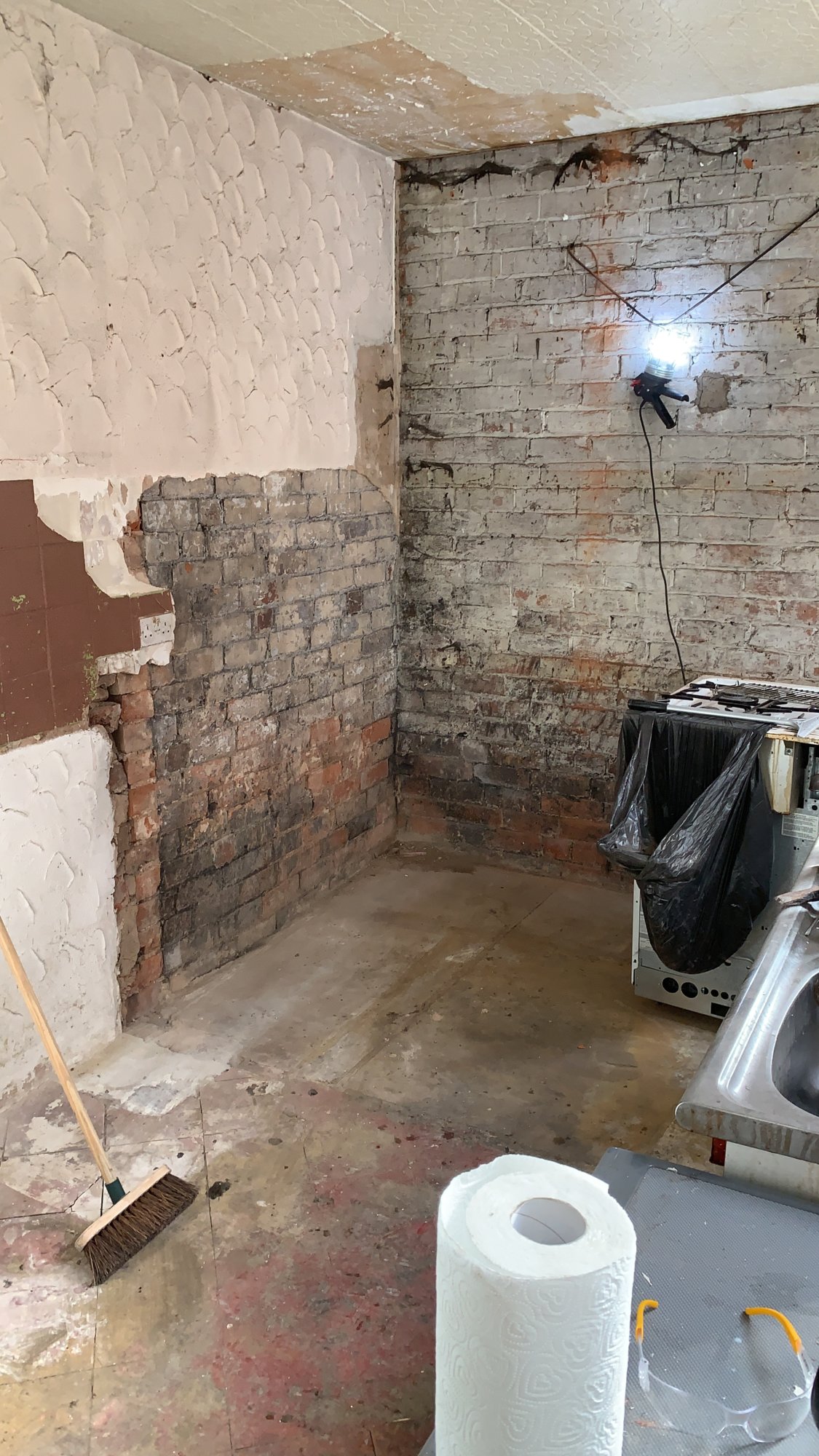This tbh. There is a big hump in the centre of the long wall (pics to follow very shortly). I’m fairly confident I could correct that with dot’n’dab, but as it’s a 4.4m long wall and 2.7m high, I’m not confident I could bond and set it successfully.Dot and dab is more likely to fall within the OP’s skill level than successfully rendering to a plumb and flat surface.
I’m tempted to have a go at the smaller wall 2.2m x 2.7m. What’s the worst that can happen?








